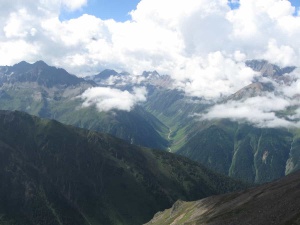Forty-two per cent of Myanmar is mountainous and these areas form some of the most important landscapes in terms of biological, cultural, traditional and ethnic diversity and identity. Mountainous areas are also important for the country’s economy, providing most of the fresh water for the country. In addition, three-quarters of Myanmar’s 132 Key Biodiversity Areas (KBAs), areas identified as being particularly important for biodiversity, are located in mountainous areas, and are home to several endemic and globally important species. In the far north, with an elevation of 5,881 m, Hkakaborazi is the highest peak as well as part of the only permanently snow-capped mountain range in the Indo-Burma region. These mountain ranges are home to diverse ethnicities who practice traditional upland cultivation systems and are dotted with peaks and caves of cultural and historical Importance.
Karst formations can be found in Taninthayi Region, Kayin State, Shan State, and stretching along the upper Ayeyawady River in Kachin State. Karst formations are home to species with severely restricted ranges, some of which are confined to a single cave or peak. This high rate of endemism makes karst systems particularly important for biodiversity conservation. Limestone quarrying for cement production threatens karst ecosystems.
There are six mountain ranges in Myanmar, Eastern Himalayan Extension, Chin Hill, Western Plateau/Rakhine Yoma, Bago Yoma, Eastern Plateau, and Taninthayi Range.

